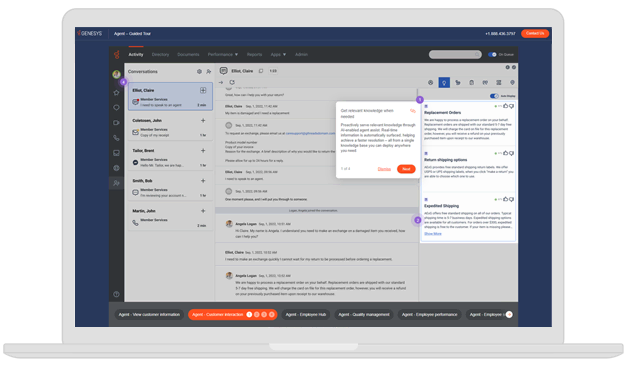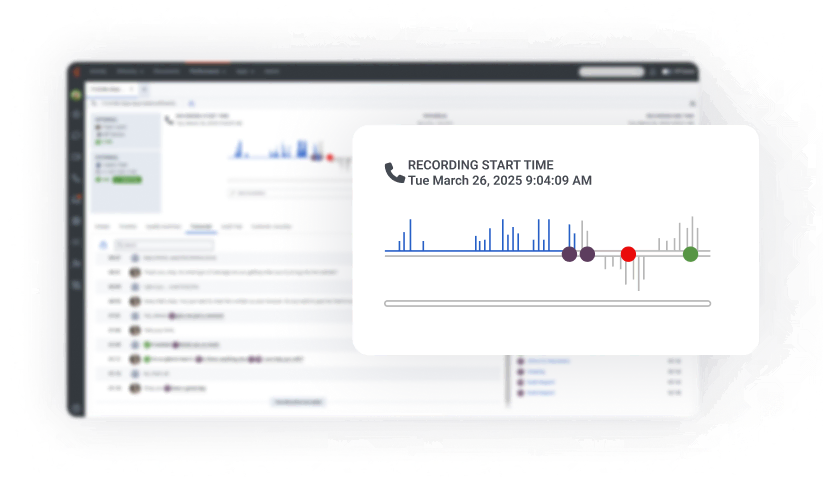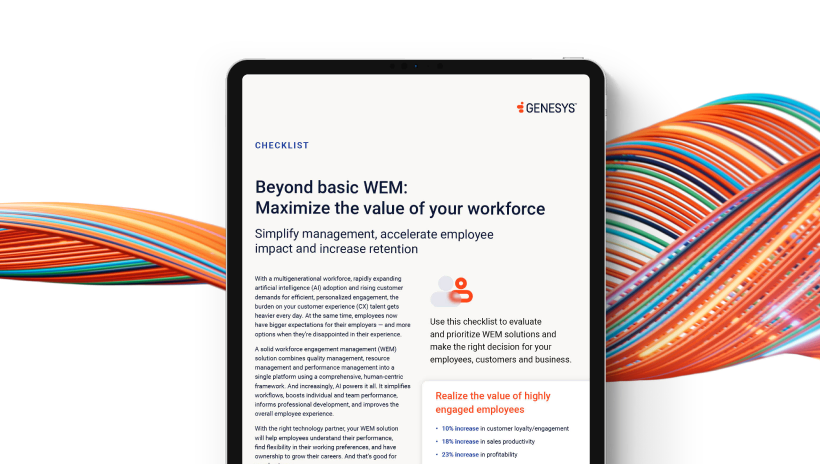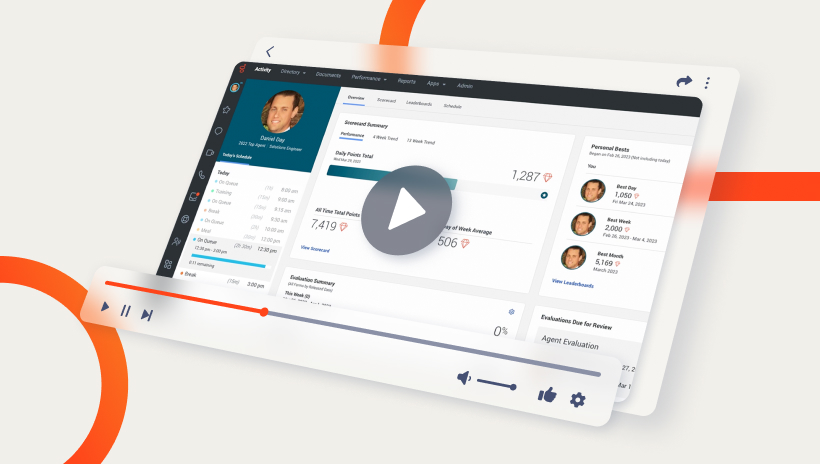How do you analyze call center data?
Contact center data analysis involves collecting your customer data from as many sources as you have access to. These include digital channels, calls, chats and emails — and using analysis software to interpret all that gathered data, preferably in real time. This analysis is made much easier by having access to AI, which can analyze data faster and more efficiently. Key metrics like average handle time, first-call resolution, and positive and negative sentiment scores can reveal where your agents and supervisors need to improve.
What are speech and text analytics?
Speech and text analytics is a set of features that automatically analyzes content immediately after the end of an interaction. It transcribes your interactions, identifies the topics and categories that are covered, provides sentiment analysis and more.
This analysis gives you insight into your customer-agent conversations. Speech and text analytics includes the transcription of voice interactions, as well as customer sentiment analysis and topic spotting. That helps to create meaning from otherwise unstructured data, especially when AI is integrated within your analysis platform. You can use this data to fulfill use cases around agent performance improvement, compliance, customer satisfaction and business intelligence.
What is voice and digital transcription?
Voice and digital transcriptions capture conversations to understand who is saying what. This includes external (customer) and internal (flows or agents, for example). For voice interactions, a transcription engine transcribes the audio into the written word. The internal participant can be an IVR, a voicebot, ACD, agent, conference or voicemail.
For digital interactions such as email, message or chat, the internal participant can be a bot or an agent. This information gives you insights into how you can improve employee training and feedback, and it helps you to identify business problems.
What technology does speech analytics use?
Speech analytics employs technologies like automatic speech recognition to transcribe audio into text. It also uses natural language understanding to comprehend what’s being said by both sides, and to do sentiment analysis of the transcribed text.
What is sentiment analysis?
Sentiment analysis is the process of understanding the quality of a customer’s experience during an interaction. It is based on the language used by the customer during each interaction. It uses the transcript generated from the interaction as a basis for analysis.
By capturing the sentiment of the customer’s words and phrases, you can gain valuable insight into positive and negative customer feedback and experience. In short, you can see whether customers are having a positive or negative experience. You can then use this information to improve service delivery.
What is agent empathy analysis?
Empathy analysis is the process of understanding agent behaviors during an interaction through conversational intelligence. Are your agents doing a good job of understanding customer needs? Are they genuinely being helpful? With agent empathy, you can gain deeper insights into interactions and agent language; personalize performance and learning; and deepen customer relationships.
What is a customer service sentiment score?
A customer service sentiment score is a measure of the feeling customers have after interacting with your customer service team. You can get this score by analyzing customer interactions — are customers friendly, or do they become aggravated when being served? The result reveals their opinion of, and emotional response toward, a product, service or the brand sentiment overall. Calculating an overall sentiment score and an overall sentiment trend for the interaction requires the use of all sentiment values, including all brand mentions.
How can I improve the sentiment score in my call center?
To improve sentiment scores in a contact center, start by using the best customer sentiment analyzer available to you. The better data you have, the more likely it is you’ll be able to identify and solve issues. Train agents to respond to customer calls with empathy, including actions such as repeating back what the agent heard to make sure they’re responding to the right issue. And apply text-mining techniques to customer interaction transcripts to gain deeper knowledge of what customers are saying and what that means for you.
What types of features should be included in a good sentiment analysis tool?
A good tool should be able to accurately determine sentiment (positive, negative or neutral) and intensity. It should support the languages you work in and be able to handle variances, such as slang, abbreviations and misspellings. It may also offer features like entity recognition (e.g., identifying people, places and brands); emotion and intention detection; and trend analysis. Integration capabilities, usability and good support are also important in a sentiment analysis feature.
Which method is best for sentiment analysis?
The “best” method for sentiment analysis can depend on the specific task. Machine learning methods, especially deep learning, can be powerful but require a lot of data and computing resources. Rule-based methods can be effective for simpler tasks or when resources are limited. Hybrid approaches that combine machine learning and rule-based methods can often provide a good balance.
What is the difference between NLP and speech recognition?
Speech recognition transcribes spoken words into text. NLP interprets and generates human language. NLP, in particular, is integral to advanced sentiment analysis capabilities.
Is NLP the same as sentiment analysis?
No, NLP is not the same as sentiment analysis. NLP is a broader field that involves using computers to understand, interpret and generate human language. Sentiment analysis is a specific application of NLP that involves determining the sentiment or emotion expressed in text.
What is the difference between speech analytics and voice analytics?
Speech analytics and voice (or acoustic) analytics work together to provide a holistic view of the content and quality of interactions. Speech analytics focuses on what is being said, the words and phrases that are used by both agent and customer. Acoustics analytics focuses on overtalk, silence and total talk time. Using both allows you to analyze what customers are asking for, how they’re getting help and how agents and customers feel.
Can speech and text analytics improve customer service interactions?
Yes, speech and text analytics can help identify ways to improve how customer service teams interact with customers. Examining what’s said during each interaction allows you to locate correlations between certain actions and positive or negative outcomes, which means you can accentuate the positive and eliminate the negative more easily.
How accurate are speech and text analytics in understanding different languages and accents?
Speech and text analytics can sometimes struggle with non-American English, but with time this has improved. Businesses around the globe have seen success using speech and advanced text analytics to examine and improve their customer service interactions.
















